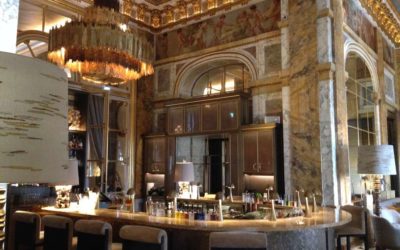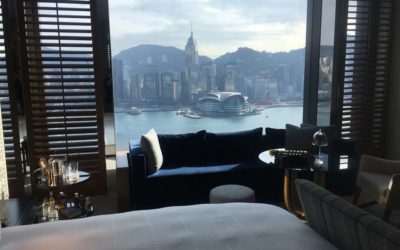The opportunities for international marketers of luxury brands in China. But also, the dilemmas they face and the choices they need to make to attract the newly affluent Chinese consumer.

Ever since the new political leaders in China coined the term the “great rebalancing act” to push for growth in domestic consumption, there has been a lot of talk about how to go about doing that.
While there are those who paint doomsday scenarios of China’s economic prospects—including the latest one by Nobel Prize-winning economist Paul Krugman, who argues that China now faces a number of insurmountable challenges such as an abnormally low rate of consumption, on the other side of the scale there is a strong sense of optimism that the Chinese are resilient and its ever-expanding middle and affluent classes will come to the rescue.
In fact, a report by The Boston Consulting Group published in November 2012, says that by 2020, China is expected to have 280 million affluent consumers, accounting for more than 30 percent of the urban population. By 2020, this class of people is expected to account for 75 percent of the US$150-billion growth in the personal-luxury-goods market. Within this group, the “Sugar Generation”—the children of the current affluent class—makes up just 10 percent but is expected to grow to 30 percent in the next five years.
And according to another report by McKinsey published in December 2012, beyond the affluent class is a rising number of an ultra-wealthy household, or high net-worth individuals, whose annual disposable income is above RMB 1 million. Their number is projected to grow at over 20 percent annually in the next three years. What’s more important is their tendency to trade up to more expensive and more luxurious products. This group is expected to account for 28% of luxury consumption by 2015.
With these figures in mind, it would be hard pressed to think that a strong domestic consumption trend would be absent on the horizon.

Suzanne Godfrey, adjunct professor of marketing at CUHK Business School and founder and director of Suzanne Q Solutions
Suzanne Godfrey, adjunct professor of marketing at the Chinese University of Hong Kong Business School, and founder and director of Suzanne Q Solutions, a Hong Kong-based brand and marketing consultancy, agrees there are a lot of opportunities for international marketers of luxury brands—such as Louis Vuitton, Gucci and Hermès—going forward. Whether they will succeed in capturing the lucrative yet ever-evolving market in China depends on how they manage to understand and anticipate the demands of the luxury client and how they play out their expansion strategy in a way that does not dilute their brand value.
A Snapshot of the New Affluent Style
What do luxury brand marketers need to know about their current and up-and-coming Chinese clients?
According to Prof. Godfrey, they tend to be “more flashy and ostentatious about it. They want to show it off. It’s about climbing up the ladder and you see that in so many aspects of life in China. They didn’t have it yesterday and they’ve got it today.”
However, she says the Chinese luxury goods buyers are becoming increasingly sophisticated, particularly in the last few years and at the top end. She points out that luxury has created a new social protocol and the increased number of upscale social and business events has provided the opportunity to wear and show off luxury. “As China has become more prosperous, the opportunities to wear these things, and to drink wine and even champagne, have also increased,” she notes.
Another interesting phenomenon is how quickly consumers want to trade up the brands in order to distinguish themselves from “the new people coming in at the bottom.” She explains: “There is such a migration of people out of the middle class, into the middle class, within the middle class, just because of the speed with which people have been making money. People want to separate themselves and not be associated with those newly rich. They are getting a bit more stylish, looking to trade up within a brand or to even more exclusive labels.”
In fact, the recent global trend to trade up–and down–is also occurring in China, particularly among the “Sugar Generation”—those born in the 80s and 90s and who grew up in affluence. “This younger generation of people wish to demonstrate their individualism—despite a Confucian value system and living in a collectivistic society—and are mixing and matching high street brands with luxury accessories,” says Prof. Godfrey.
What is important to know, however, is not so much the kind of individual styles these people have adopted but the motivation behind their purchases. “As they start getting some experience with using luxury and start trading up, they are changing their motivation for purchase, not just for the status—it’s still there for sure—but they are doing it also for themselves. It’s a move from just buying the material things to the actual experience of having a luxury lifestyle. So that includes holidays, travel, spas, wellness centers, and even lifestyle, home-based things, and art. So they are moving into more experiences, which is about pleasing self.”
While it is known that the luxury market is all about experience—from the aspiration to the actual purchase to being given individual attention and made to feel special—the kind of exclusivity that the ultra-rich Chinese demand is on a much higher level than most other cultures, according to Prof. Godfrey.
“For example, some brands close their entire stores to host exclusive shopping evenings to those on the VIP list. Some wineries in France have flown some of their best Chinese customers to Bordeaux to see how their wines are made. These are really exceptional treatments,” she says.
Dilemma for International Brands
In China’s luxury goods market, there are those who belong to what is known as the “mass luxury consumers” and those who are more sophisticated and regarded as luxury “clients”—which is closer to the traditional definition of those who buy luxury. Prof. Godfrey thinks the former is an oxymoron because the nature of luxury inherently means that one does not “consume” it, and luxury doesn’t exist “en masse.” However, in China that is a reality created by the surge of new money among a huge population and the desire for luxury that has come with it.
The problem that this class of consumers has created for international luxury brands is whether marketers want to—and can—appeal to both ends of the spectrum–the “new rich” and the wealthy elite. Some have tried to introduce lower-priced items such as accessories, in the hope that the mass luxury consumers will eventually be able to afford products at the higher end of the price range. In doing so, they are trying to reach out to both groups of customers.
But this isn’t always possible, contends Prof. Godfrey. “For the brands, it’s a question of how they can appeal to those mass luxury consumers in the hope they will stay with the brand and eventually trade up to higher-priced products rather than go in search of a different and more prestigious label. At the same time, the brands want to appeal to the top end of the market—the wealthy elite—and not alienate them or dilute their brand image in the process. Luxury expansion needs to be handled quite carefully.”
The Shifting Trend
While some international brands run a wide gamut of products to capture as big a sector of the market as possible, there are those who have gone in a different direction.
“There are a lot of newer brands coming up, which are smaller and more niche,” says Prof. Godfrey. “They are beginning to differentiate themselves and going for things that are unique and individual, things that not everybody has, that are one of a kind or more of a limited edition. These brands are helping to preserve some of the local skills and crafts around the world. They also want to make money but not necessarily billions. They don’t have shareholders breathing down their necks. They are much more protective of the brand’s vision and with what they want to do and how they expand.”
Some examples of such brands that build on traditional Chinese craftsmanship and use of local materials include:
Shang Xia, a clothing, home decorations and accessory shop owned by Hermès, with shops in Shanghai, Beijing and most recently, Paris.
Qeelin, an upscale jewelry brand established by a Hong Kong designer and a French entrepreneur, owned by Kering, the newly rebranded PPR Gucci Group.
Shiatzy Chen, a fashion house set up by a Taiwanese designer with stores in Greater China, Asia and Europe.
The thinking is that there is a role for Asian brands in the long term. The big names in the business understand that luxury brands can take a long time to develop. “It takes time to build up reputation, to create a dream and to establish your clientele,” Prof. Godfrey notes. “These companies have long-term visions, and they’ve got deep pockets so they can absorb some of the risks.”
Which City Tier to Expand into
There has been a big push to go into a lot more cities beyond the Tier-1 cities. But companies that have done that have recently pulled back from their initial rapid expansion plans.
“The concern with going into Tier-2 and Tier-3 cities is that the [international marketers] are risking stretching themselves too thin too quickly,” observes Prof. Godfrey. “It’s not about how many stores you have but about the quality and how logistically difficult it is in China to maintain control. It’s better to start out with fewer stores than spread yourself too widely and lose your brand’s cachet in the process.”
Prof. Godfrey also stresses the potential harm to the brand through expanding too quickly in lower-tier cities: “It’s about the image. You need to have your stores situated in the right location, where there is the right environment, otherwise it may adversely affect your image. And you need to offer the right experience. The quality of the consumer is also likely to be different. When they purchase your products they become representatives of your brand.”
These factors—especially the complexity and size of the population—make it all the more challenging to manage luxury brand images in China.
With this in mind, Prof. Godfrey does not advocate luxury brands to focus on penetrating Tier-3 cities at the moment, and to be cautious about entering Tier-2.
“Some brands think they can sell lots of different things—a wide range of goods at different price levels. But coming in as a new brand, it’s actually quite important to emphasize the heritage and the brand’s origins. It’s not about being everything to all people. It’s important to get the foundation of the brand established, to focus on the core,” she advises.
Educating the Chinese Clientele
Since buying luxury products is very much about the experience, Western companies need to cultivate potential clients and spend money on that education process, according to Prof. Godfrey. “It’s about teaching people to become connoisseurs, educating them through experiential marketing, and giving them the opportunity to learn to appreciate the brand.”
In China, several brands have started the trend of staging exhibitions, cultural events and fashion shows. Some examples are: Chanel’s Culture Exhibition, Cartier Treasures Exhibition, the opening of Johnnie Walker House and the fashion show at Louis Vuitton’s Shanghai flagship store.
“Luxury is about pleasure seeking and the emotions that it brings, so a lot of the communication by luxury brands is about storytelling, showing the heritage and culture, engaging and educating people so they can understand the brand better,” explains Prof. Godfrey.
Encouraging Domestic Consumption
Besides educating potential clientele, there are a few things that international luxury brands should try to address to encourage domestic consumption within China. Due to the various types of taxes imposed on imported luxury goods, prices of luxury goods could easily be 50 to 70 percent more than what they would cost overseas. As a result, luxury tourism, which has always been big in Asia, has taken off big time in recent years in China. Chinese people feel that they get a much better experience and service while shopping abroad. The allure attached to buying authentic foreign products in their countries of origin—both for themselves and for their friends and family back home—makes luxury tourism all the more attractive, so much so that companies like Louis Vuitton have introduced Chinese staff in their flagship stores in Europe.
To encourage domestic consumption, Prof. Godfrey suggests that international marketers should make sure their stores can deliver the same level of quality and experience that their clients enjoy overseas. “This involves training staff to provide the expected level of service, imbue clients with the brand’s aesthetic and the culture that stems largely from its country of origin, as well as staffing the shop floor with people from the ‘home’ country.”
Another thing, suggests the professor, is to make sure there is a greater consistency in the range of products between the stores in China and those overseas and, of course, to see if they can get more equalized prices. But this, ultimately, would be the government’s job.




